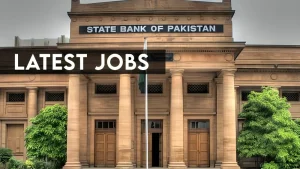Affordable housing financing models are essential to solving the global housing crisis. From tax incentives to digital lending platforms, these models aim to make housing accessible and sustainable. This guide explores the most effective financing methods used globally, their benefits, and how they can be implemented in developing and developed countries alike.
1. Public-Private Partnerships (PPPs)
What It Is: Collaboration between governments and private developers.
How It Works: Government provides land or subsidies; private sector builds and manages housing.
Global Example:
- USA: Capital One using LIHTC and NMTC in affordable housing.
- India: Pradhan Mantri Awas Yojana combines subsidies with private builders.
Benefits: Scalable, cost-effective, and risk-shared housing delivery.
Read More: NAB Freezes Properties of Malik Riaz’s Son & Bahria Town
2. Low-Income Housing Tax Credit (LIHTC)
What It Is: U.S. federal tax credit for developers of affordable rental housing.
Global Appeal: Influencing UK and other countries.
Impact: Over 4 million homes built in the U.S.
Benefits: Stimulates private investment and long-term affordability.
3. Community Land Trusts (CLTs)
What It Is: Nonprofits own land and lease it to homeowners under long-term agreements.
Example: Champlain Housing Trust, Vermont (USA).
Benefits: Ensures affordability, prevents land speculation, and empowers communities.
4. Social Impact Bonds (SIBs)
What It Is: Private investors fund social programs; governments repay if goals are met.
Example: Manchester, UK – reduced homelessness using SIB.
Benefits: Results-based financing, accountability, and innovation.
5. Microfinance & Housing Savings
What It Is: Small, flexible loans and saving plans for low-income families.
Examples:
- Grameen Bank (Bangladesh)
- Slum Dwellers International (Global)
Benefits: Increases access to capital for self-built housing.
Read More: Total Station Price in Pakistan – 2025 Buying Guide & Latest Rates
6. Blended Finance & Impact Investing
What It Is: Combines public and private capital to fund affordable housing.
Benefits: De-risks investment, supports innovation, and attracts institutional funds.
7. Land Value Capture (LVC)
What It Is: Captures increased land value due to public investment (e.g., roads, transit).
Example: Bogotá reinvesting land appreciation into housing.
Benefits: Generates funding without taxing low-income residents.
8. Cooperative & Cohousing Models
What It Is: Collective ownership or governance of housing.
Benefits: Cost-effective, community-led, and socially inclusive.
Popular In: Europe, Canada, and parts of Asia.
9. Rent-to-Own & Government Rental Housing
What It Is: Housing options that allow tenants to gradually own their homes.
Examples:
- Divvy Homes (USA)
- ARHC Scheme (India)
Benefits: Low-entry, flexible paths to ownership.
Read More: Globe Residency REIT – A Smart Investment in Pakistan’s Real Estate
10. National Housing Funds
What It Is: Public institutions that offer mortgages and finance housing projects.
Example: Iceland’s Housing Financing Fund (HFF).
Benefits: Ensures consistent, state-backed housing support.
11. Regulatory & Zoning Reforms
What It Is: Policies like inclusionary zoning and upzoning to encourage affordable housing development.
Benefits: Increases housing supply and promotes mixed-income communities.
12. Tech-Driven & Fintech Innovations
What It Is: Use of technology in housing finance, including P2P lending and digital credit scoring.
Benefits: Reduces barriers to financing and speeds up approval processes.
13. Green Housing & Climate Financing
What It Is: Sustainable housing finance promoting energy efficiency and resilience.
Example: Green loans in Vietnam for solar power and water systems.
Benefits: Attracts eco-conscious investment and improves long-term sustainability.
Comparison Table: Affordable Housing Financing Models
| Model | Key Benefit | Example Region |
|---|---|---|
| Public-Private Partnerships | Shared cost and efficiency | India, USA |
| LIHTC | Tax incentive for developers | USA |
| CLTs | Permanent affordability | USA, UK |
| SIBs | Performance-based funding | UK, Australia |
| Microfinance | Low-income accessibility | South Asia, Africa |
| Blended Finance | Mix of private and public capital | Global |
| Land Value Capture | Utilizes land appreciation | Colombia, Brazil |
| Cooperatives | Community ownership | Canada, Germany |
| Rent-to-Own | Low barrier to ownership | USA, India |
| National Funds | State-led mortgage finance | Iceland |
| Zoning Reforms | Supports inclusive development | USA, Europe |
| Fintech | Digital access to credit | Indonesia, India |
| Green Housing | Sustainability and resilience | Vietnam, Kenya |
Read More: Green Building Movement in Pakistan – PGBC Initiatives & Updates 2025
Final Thoughts
The demand for affordable housing financing models continues to grow. A combination of public policy, private investment, and community innovation is essential to meet housing needs sustainably. By learning from global best practices, countries can adapt and implement the right mix of financing models that suit their demographics, economy, and housing goals. Stay tuned with Bloom Pakistan









